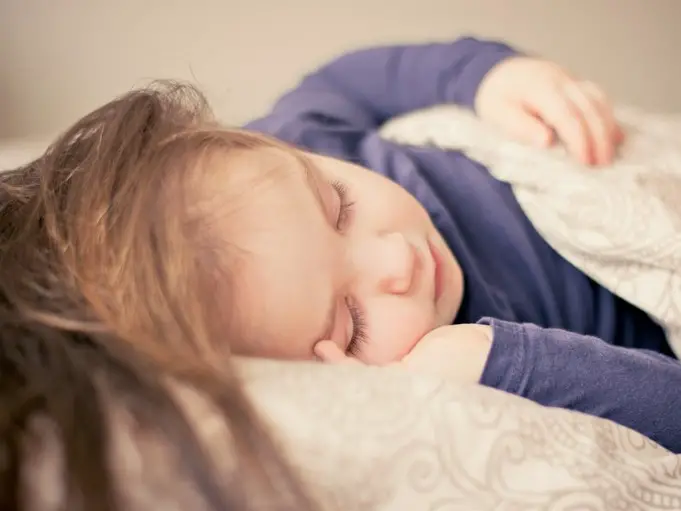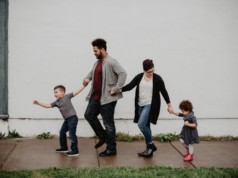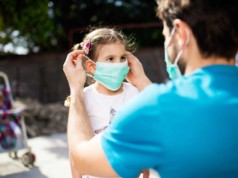Children snore from time to time, and it isn’t often a concern for parents. Snoring comes in a variety of forms, from slight grunts and gasps during one’s sleep to freight train-esque noises that can be startling.
Although most snoring is more of an endearing thing when coming from a small child, parents may have a reason to pay closer attention to those cute sounds.
Mild health issues, like a common cold or a respiratory infection, may be behind snoring in some children, but in other cases, persistent snoring could be a warning sign of sleep apnea.
Among children aged one to nine, nearly twelve percent have sleep apnea in some form. That pales in comparison to the nearly 20 million adults who are diagnosed with sleep apnea, but it does require some understanding of the condition among parents with young children.
In the advanced world of medicine we live in today, being diagnosed with sleep apnea does not mean a life of uncomfortable breathing or restless sleep. Instead, sleep apnea can be treated and controlled, even in young children, so long as early intervention takes place.
Parents who have a child that snores more than three times a week are smart to evaluate other behaviors to determine if a doctor’s visit is the best next step. Here’s what parents can do to take charge of their child’s health and well-being when snoring may be a consistent issue.
What is Sleep Apnea?
Sleep apnea, whether diagnosed in a child or an adult, is defined as the obstruction of normal airflow during a night’s sleep.
Being unable to breathe throughout the night can take place two to three times or a few hundred, depending on the severity of the sleep apnea. During sleep, an individual’s breathing temporarily stops because the natural flow or air is impeded.
This causes the brain to signal the person sleeping to wake up abruptly so that normal breathing can resume. While most children with sleep apnea fall back asleep shortly after the forced wake up, the condition can cause mild to severe medical issues that take away from their quality of life.
Sleep apnea comes in three main categories. Obstructive sleep apnea is by far the most common among children and adults, as it is caused by the relaxing of muscles in the throat.
OSA takes place when the muscles become so relaxed that they allow the fatty tissue surrounding the throat and the tongue to fall back, blocking the normal airflow during sleep. Some experience a partial blockage while others have a complete blockage.
In either case, breathing is halted during the night which causes the child to wake up briefly so that they can breathe again. Gasping for air and choking may occur each time a child wakes up after the airflow is blocked, but once they have enough air again, sleep resumes.
Different from obstructive sleep apnea, central sleep apnea occurs when signals sent from the brain to the throat muscles are not received correctly. The muscles do not react, leading to a blockage of airflow that causes breathing to stop.
Similar to obstructive sleep apnea, children with central sleep apnea may experience gasping or choking when the brain sends the signal to wake up and begin breathing again. Central sleep apnea is far less common than obstructive, but snoring can be a warning sign as well.
Mixed sleep apnea is the last category, which combines elements from obstructive and central sleep apnea. There are many misfires of communication in the brain along with the relaxing of the throat muscles, all which cause a child to stop breathing during sleep.
Warning Signs in Children
Each type of sleep apnea carries similar warning signs that parents should be able to recognize in their children. Drowsiness during the day, even after what seemed like a full night’s rest, is a common sign of sleep apnea in children.
Snoring more than a few times per week over an extended period of time is also a cause for concern. Children may experience behavioral issues at school or throughout the day, which can be linked to sleep apnea and the reality that they are not getting enough rest to remain healthy.
If it is difficult to wake a child up in the morning, they sweat during sleep, or they wet the bed, these could all be signs of sleep apnea as well.
Getting the Best Treatment
Even though the diagnosis of sleep apnea in a child may seem overwhelming, parents have plenty of options for treatment to help their children get a good night’s rest.
However, a specialist firm of negligence solicitors that work with several ear, nose, and throat cases, advise parents always to seek out a second, or even third, opinion when sleep apnea is a suspected issue.
This is because ear, nose, and throat specialists may recommend a treatment like surgery that could not deliver any respite for the child, leaving them with the same symptoms as before.
In some cases, a misdiagnosis may lead to other unnecessary treatments that simply prolong the issue instead of making it better. Parents should understand that treatment options come in a variety of forms, including non-invasive and at-home options that may be more beneficial and less traumatic for the child.
Sleep apnea affects more children than parents are aware, and because snoring seems like a non-issue, the condition may go undiagnosed for longer than necessary.
Paying close attention to your child’s sleeping habits as well as their behaviors throughout the day are pertinent to recognizing sleep apnea as a potential issue.
Once the correct diagnosis is made, children with sleep apnea can begin treatment and ultimately lead a healthier, more comfortable life that includes restful sleep.














